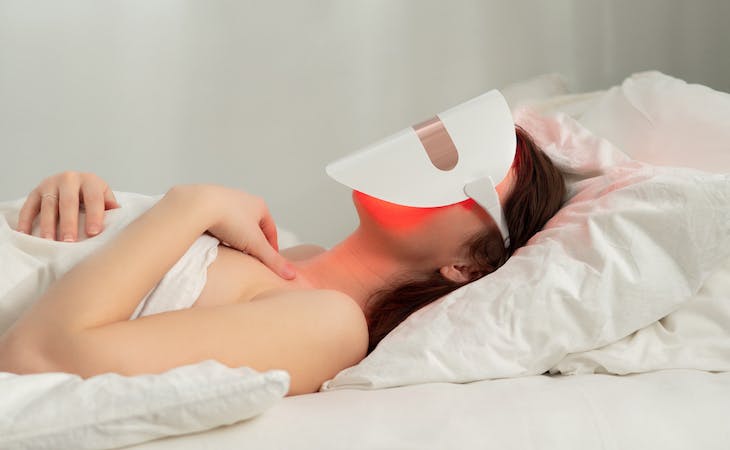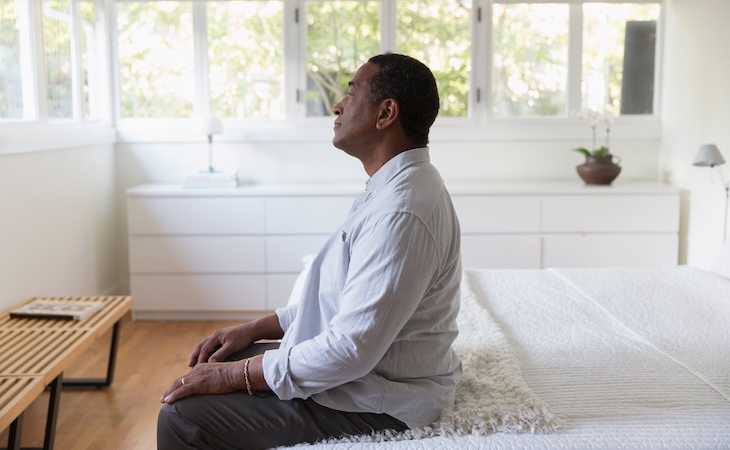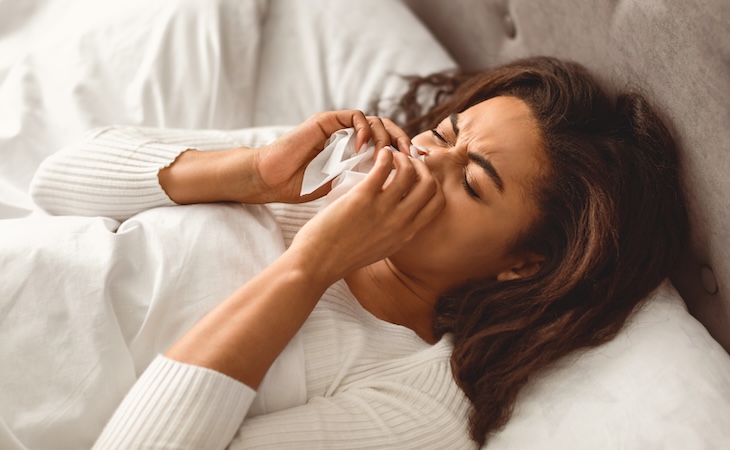We all know by now that blue light from electronic devices isn’t good for sleep, but you may not have heard about the effects of red light on your ability to get quality shut-eye. Turns out, there’s some evidence to suggest red light may be beneficial to sleep and overall health.
As more people turn to non-medical treatments to help them sleep better, it’s no surprise red light therapy is being looked at as a viable option. Here, we break down the science behind red light therapy and how it may improve sleep.
What is red light therapy?
Red light therapy is a therapeutic technique that exposes a person to low wavelength red light. This can be done with a lamp, device, or laser that emits a specific wavelength of red light.
“Red light therapy is when a particular frequency of light is exposed to the eye or body,” explains Michael J. Breus, PhD, clinical psychologist and fellow of the American Academy of Sleep Medicine. “This is not a red-tinted bulb with a full spectrum.”
While conventional red lightbulbs may create a soothing ambiance, they don’t actually emit red lightwaves and therefore won’t have the same impact on sleep.
As it produces very low levels of heat, red light therapy will not harm or burn the skin. It’s a different type of light than what’s used in tanning beds and doesn’t contain UV rays so there’s no need to worry about skin damage.
What are the health benefits of red light therapy?
Red light therapy is said to have several health benefits. While research into the therapy is still ongoing, there is evidence to suggest it can help improve injury recovery, promote wound healing and tissue repair, relieve pain and inflammation, and improve skin complexion and even reduce wrinkles.
The benefits are believed to come from changes at a cellular level. Red light therapy produces a biochemical effect in cells that strengthen the mitochondria, or the powerhouse of the cell, Breus explains. This is where the cell’s energy is created. The more energy cells have, the better they can function, regenerate, and repair damage.
Can red light therapy improve sleep?
Red light therapy has also been shown to help improve sleep. Red light wavelengths are thought to stimulate melatonin, the hormone that promotes sleep.
One study published in 2012 in the Journal of Athletic Training looked at the effects of red light therapy in 20 female athletes. Half of the participants received 30 minutes of red light therapy each night for two weeks, while the other half didn’t receive the treatment. At the end of the study period, it was found that those in the red light therapy group had improved sleep, higher levels of melatonin, and increased endurance performance.
Another study published in 2019 in Nature and Science of Sleep found red light therapy may help with “sleep inertia.” This is the feeling of grogginess you may get when first waking up. The researchers found that red light therapy delivered through closed eyelids improved sleep inertia upon waking.
While these studies are promising, Breus emphasizes “new research is needed to truly understand all the effects of red light on sleep.”
How to get started with red light therapy
If you’re interested in giving red light therapy a try, you have a few options.
“There are several different companies that make red lights,” Breus says. “I would always suggest that people look for companies that have a board of advisors with a sleep specialist or if a sleep doctor has ‘approved’ the correct frequency and protocols.”
Kristin Weitzel, certified fitness trainer, certified breath and exposure training coach, nutrition specialist, and global brand ambassador for FlexBEAM, a targeted red light therapy device for at-home use, offers a few tips to get the best results from red light therapy.
“The first thing is to create a consistent practice,” she says. “It doesn’t have to be more than 15 minutes a day, but if you don’t do it consistently, it’s like anything where you’re not going to see results from just doing it one time.”
It’s also important to make sure you’re close to the device. “You want the red light to be able to penetrate your skin,” Weitzel says. “If the light is five feet away from you, you’re not really getting the benefits from it that you could.” Devices like FlexBEAM are meant to be placed directly on the skin for maximum benefit.
Weitzel also recommends using a wearable device while trying red light therapy so you can track your sleep quality over time and look out for improvements.
Finally, while red light therapy is generally considered to be safe, it’s always best to check with your doctor before starting any new treatment or therapy.
From cryotherapy to infrared saunas, here are more trendy wellness treatments that could help you sleep better.




